How Throttle Controllers Improve Your Vehicle's Performance
In the world of automotive performance, drivers are constantly searching for ways to enhance their vehicles' responsiveness and power. One question that repeatedly surfaces in forums and discussions is: "Do throttle controllers actually work?" The short answer is yes—but understanding how and why they work requires diving deeper into the technology behind modern vehicle electronics.
Understanding Electronic Throttle Systems
Modern vehicles have largely abandoned mechanical throttle linkages in favor of electronic throttle control (ETC) systems, often referred to as "drive-by-wire." In these systems, the accelerator pedal no longer connects directly to the throttle body through a cable. Instead, pressing the pedal activates position sensors that send signals to the Engine Control Unit (ECU).
The ECU then interprets these signals and commands the throttle body to open accordingly—but not always at a 1:1 ratio. Manufacturers often program deliberate delays and non-linear response curves for various reasons:
-
Emissions control
-
Fuel economy optimization
-
Smoother driving experience for average drivers
-
Protection of drivetrain components
This programming creates what many enthusiasts perceive as throttle lag or a "dampened" feeling when accelerating.
What Throttle Controllers Do
Throttle controllers are compact electronic devices that install between your accelerator pedal sensors and the ECU. Their primary function is to modify the signal before it reaches the ECU, essentially "recalibrating" the relationship between pedal position and throttle response.
Rather than altering the maximum power output of your engine, throttle controllers change how quickly your vehicle responds to pedal inputs and how the throttle opens throughout the pedal's travel range.

The Real-World Effects on Performance
Improved Throttle Response Time
The most immediate and noticeable benefit is significantly reduced throttle response time. Independent testing has shown that quality throttle controllers from brands like Banks Power can reduce the delay between pedal input and engine response by up to 70%.
For example, a stock vehicle might require the accelerator pedal to be depressed 40% before the throttle body opens 20%. With a throttle controller installed and properly configured, that same 40% pedal depression might result in a 40% throttle opening—creating a much more direct, responsive feel.

Banks Power Pedal Monster Throttle Sensitivity Booster
Acceleration Improvement
While throttle controllers don't add horsepower in the traditional sense, they can improve perceived acceleration, particularly in these scenarios:
-
Low-speed maneuvering: Merging into traffic becomes more confident with predictable throttle response
-
Passing scenarios: The elimination of lag means immediate power when needed
-
Stop-and-go driving: Smoother takeoffs from standstill positions
-
Towing situations: More precise throttle control when managing heavy loads
BD Diesel's throttle enhancement products have been particularly noted for their effectiveness in towing applications, where throttle predictability is crucial for safely managing heavy loads.

BD Diesel Throttle Sensitivity Booster
Enhanced Driving Experience
Beyond the measurable metrics, throttle controllers significantly transform the subjective driving experience:
-
Increased driver confidence: The vehicle responds exactly as expected
-
Reduced driver fatigue: Less need to "overcompensate" for throttle lag
-
More engaging drive: The car feels more connected to your inputs
-
Customizable performance: Most modern controllers offer multiple modes for different driving scenarios
The Injen Power Module, for instance, offers sport and eco modes that can be switched on the fly, allowing drivers to prioritize either performance or fuel economy depending on their current driving needs.
Performance Testing Results
Skeptics often question whether throttle controllers deliver measurable benefits or just "placebo effects." Fortunately, extensive testing provides clear answers.
In controlled 0-60 mph tests conducted with various vehicles equipped with throttle controllers, improvements of 0.2 to 0.5 seconds were commonly observed. While this might not sound dramatic, the difference in everyday driving—particularly in the crucial 0-30 mph range that constitutes most daily driving—feels substantial.
How They Differ from ECU Modifications
It's important to understand the distinction between throttle controllers and comprehensive ECU tuning:
Throttle Controllers:
-
Focus specifically on accelerator pedal response
-
Don't alter air/fuel ratios, spark timing, or other engine parameters
-
Typically don't void factory warranties
-
Install in minutes with minimal technical knowledge
-
Cost significantly less than full ECU tuning
ECU Modifications:
-
Reprogram multiple engine management parameters
-
Can increase horsepower and torque throughout the power band
-
Often require professional installation
-
May void vehicle warranties
-
Generally more expensive

Many enthusiasts start with throttle controllers like the Banks Power PedalMonster before moving to more comprehensive modifications. Others find that the improved responsiveness satisfies their performance desires without the need for more invasive changes.
Installation and Compatibility
One of the advantages of throttle controllers is their straightforward installation. Most are designed as plug-and-play devices that connect to existing harnesses without cutting or splicing wires.
Most quality controllers are vehicle-specific to ensure perfect fit and compatibility. Always verify compatibility with your exact make, model, and year before purchasing.
Conclusion: Do Throttle Controllers Actually Work?
After examining the technology, testing data, and real-world performance, the evidence clearly shows that quality throttle controllers deliver tangible benefits to vehicle responsiveness and driver experience. While they won't add horsepower in the traditional sense, they optimize how effectively you can use the power your engine already produces.
For drivers frustrated by sluggish throttle response or those simply seeking a more engaging driving experience, throttle controllers from reputable manufacturers like Banks Power, BD Diesel, aFe, and Injen represent one of the most cost-effective performance upgrades available.
They transform how your vehicle feels without the complexity, warranty concerns, or expense of more invasive modifications—making them an excellent first step into the world of performance enhancements or a satisfying standalone upgrade for drivers seeking more connection with their vehicles.
- Choosing a selection results in a full page refresh.
!
